Eureka, this is the second part of the results of the wheat yeast comparison experiment. The background of this experiment can be found here. No further introduction, let’s get straight into the results.
Tasting results
The tasting was done by a group of three people to determine different aromas and flavors of the different beers. The beers were tested in pairs of three over several days to prevent any exhausted palates.
To make it easier for comparison, the following aroma and flavor profiles were evaluated:
Aroma: Banana, phenolic, bubblegum, fruity (apple, citrusy, strawberry, undefined fruits)
Flavor: Citric, phenolic, fruity, bubblegum, banana
The intensity of the individual aroma and flavors were described as following: 5 (high amount), 4 (medium), 3 (little), 1 (hints) and 0 for absent note. The overall impression was evaluated on a scale from 0 to 5 with 5 being the highest rating. At last, the beers were categorized into cloudy/ not cloudy. To evaluate the clarity, the beers were first poured right from the bottles and the clarity was evaluated. Then the rest of the beer was poured including the yeast sediments.
First about the similarities of all the beers. The color of the beers was more or less the same. We could not detect any differences. A typical picture of the appearance can be seen in Fig 1. The mouthfeel of the beers was light to medium with an average carbonation level. The aftertaste was short to medium lasting and the balance (sweet to bitter) of the aftertaste was more on the sweet side than bitter one. Differences are discussed below.
I mentioned that I did two fermentations for each of the strains. I turned out that some of the replicates had a different head stability and some had signs of oxidation. We therefore poured each replica side by side and evaluated both. If there were some off-flavors detectable with one of them, we just used the one without any flaws for the results below. Luckily, there was at least one flawless replica for each of the strains.
I will first talk about the flavor and aroma profile of the different yeast strains and then talk about the clarity and the overall ratings.
#3068 Weihenstephan
I used this yeast strain in the three batches I did as a control yeast to determine any differences between the three batches. But the beers from the three different batches fermented with the #3068 Weihenstephan yeast all had the same profile: huge banana (Fig 2). Nothing else! The differences between the batches were very minimal. This concludes that the beer of the three batches were very comparable. And this allows to compare the yeasts from the different batches with each other since there are no differences in the basic beers.
Wyeast describes this particular strain to give banana and clove notes. Reasons for the lacking clove note are discussed at the end of this post. All in all a very beautiful yeast. The beers were all cloudy. No surprise since this is a low flocculating yeast strain. Pretty refreshing and the banana really belongs into such a beer in my opinion. Overall rating: 4.
#3056 Bavarian Wheat Blend
The beer fermented with the #3056 Bavarian Wheat Blend had a distinct phenolic and fruity (strawberry) flavor (Fig 3). Wyeast describes this strain to be estery and phenolic. This beer was cloudy (medium flocculating yeast strain). Reasons for the lacking clove note are discussed at the end of this post.
I already tried this particular strain before and had the strawberry notes in there as well. This strain is not my favorite one because of the strawberry note. This strain could be used in a beer where a strawberry note is desired. Maybe in a fruit infused wheat beer? Overall rating: 3.
#3638 Bavarian Wheat
Fermenting the wheat beer with Wyeast’s #3638 Bavarian Wheat leads to a fruity beer. We could not assign a fruit to the detected fruit aroma. Maybe a lichi note? But lot of fruits and bubblegum in the flavor (Fig 4). Wyeast’s aroma/flavor description for this strain are apple, pear, plum esters in addition to a dominant banana character. The esters are complemented nicely by clove and subtle vanilla phenolics. The lacking banana component could be due to different pitching rates or fermentation temperatures. The beer was cloudy (low flocculating strain).
I am a bit surprised about this strain because of the lacking banana notes compared to the #3068 Weihenstephan strain (both fermented at the same temperature). Maybe this strain produces less banana esters than the #3068 Weihenstephan? This strain is not my favorite one as well. I still prefer the #3068 Weihenstephan. Overall rating: 3.
#3333 German Wheat
First, the aroma and flavor profile of this beers was lower than all the other strains (Fig 5). We could detect some banana, fruity and again, strawberry notes. And fruits and banana in the flavor. There were some sherry notes as well and the beer was pretty dry compared to the others. This could be due to a higher attenuation level of this strain compared to the other strains.
Wyeast’s description: This yeast strain produces a beautiful and delicate balance of banana esters and clove phenolics similar to the popular Wyeast 3068. We could not detect any phenolic notes in this beer. And in our opinion, the banana/ phenolic balance was not similar to the #3068 Weihenstephan strain. Once again, reasons for the lacking clove note are discussed at the end of this post. This beer was not cloudy. Wyeast recommends this strain for Kristallweizen because of its high flocculation.
Well, the strawberry note does not fit my palate very much. And the subtle aroma and flavor notes do not help this beer as well. Maybe a different fermentation temperature could change this. Overall rating of 3.
WB-06
Now, how do the dried yeasts compete against the liquid yeasts? This beer had a very fruity and apple driven aroma (Fig 6). And some fruity and citric (lemony) notes in the flavor. Safbrew describes this yeast to give a subtle estery and phenol driven flavored beer. Lets say the fruity notes we picked up belong to the subtle estery note. But we could not pick up any phenolic notes. Once again, reasons for the lacking clove note are discussed at the end of this post. This beer was clear (although stated to be low flocculating). Although the attenuation of this particular strain was above average (see first part of results), the beer was not drier compared to the other beers. Overall rating: 2. Very odd flavor profile in my opinion. And not a really refreshing beer either.
One additional goal of this whole experiment was to determine whether Wyeast’s #3068 Weihenstephan strain is the same as the WB-06. Well, this can hereby be confuted. The 3068 gave an overpowering banana note, the WB-06 did not.
Danstar Munich
There were just some sherry notes and some signs of oxidation detectable (Fig 7). There should be banana notes as stated by Danstar. But we could not pick up any banana notes at all. The beer was clear (medium to high flocculating strain). I will not further comment this strain because of the possible oxidation of this beer. I assume that there was a problem in the fermentation process or bottling in both replica.
Burgdorfer Weizenhefe
Now the last typical wheat yeast strain. This one was isolated from a local wheat beer. And there were some banana, fruity and strawberry notes again (Fig 8). But none of these aromas in the flavor. The beer was cloudy. This strain is less interesting than some of the other strains in the experiment. Overall rating: 2.
So far for the typical wheat yeast strains for a typical German wheat beer. Lets move on to some other wheat yeast strains.
#1010 American Wheat
The first strain we discuss is Wyeast’s #1010 American Wheat strain. We could pick up huge fruity and citrusy (lemony) notes in the aroma and the same notes in the flavor (Fig 9). This beer was cloudy. Wyeast describes this strain as following: produces a dry, slightly tart, crisp beer. Ideal for beers when a low ester profile is desirable. Well, the beer was kind of dry but the ester profile was in my opinion a bit higher than stated. But a really refreshing beer indeed and something different from the banana and phenolic yeast strains. This strain could be a really good one for lighter beers for the summer such as a Pale Ale. And the lemon note is really nice. Overall rating: 3.
#3942 Belgian Wheat
And the last strain in this experiment was the Belgian Wheat strain. Well, what would you expect from a Belgian yeast strain? Phenolic, phenolic and again phenolic notes. And that’s more or less what was in this beer. And some fruity notes in the aroma (Fig 10). Wyeast describes: moderate esters and minimal phenolics. Apple, bubblegum and plum-like aromas blend nicely with malt and hops. Well, the tasting panel was not that far away from Wyeast’s description. I have to say that I really enjoyed this particular brew. It was still very refreshing but had a very different flavor profile than a typical German wheat beer. This beer was again cloudy (medium flocculating). This strain is my favorite non-German wheat yeast strain. A pretty cool strain in my opinion. Overall rating: 4.
Overall discussion
The descriptions from the suppliers were very similar to the taste panels opinion. Sometimes, the beers had less or none phenolic notes although stated by the suppliers. This difference could be due to a different fermentation temperature or different pitching rates. In fact, at the same time as I was writing this post I came along an interview with an employee from Wyeast. The interview can be found here. In my opinion one of the best and most educational interview ever. Check it out. Owen Lingley mentions that underpitching of wheat yeasts can lead to a more prominent banana character. Overpitching leading to a more phenol driven beer. And I guess this is the answer to the lacking phenolic notes in the beers because I intentionally underpitched all of the beers. And the results kind of confirm Owen’s statement. One message to take home: if you want huge banana character, underpitch. If you want phenolic notes in your wheat beer, then overpitch. Increasing the temperature will lead to an increasing ester production. Maybe underpitching and raising the temperature will further increase the banana character?
Another flavor was determined several times: strawberry. I already mentioned that I detected such a flavor in a previous wheat beer which was fermented with the #3056 Bavarian Wheat Blend. But we could detect strawberry notes in the #3333 German Wheat and the isolated Burgdorfer Weizenhefe as well. I have no idea about the background how this flavor got in there.
What about my favorite strains? Well, my favorite strain before this experiment was the #3068 Weihenstephan strain. The #3068 Weihenstephan is still my favorite strain but there are some other strains which are really interesting. There is the #3942 Belgian Wheat and the #1010 American Wheat strain that fascinated me the most. And there is the #3638 Bavarian Wheat which I will use in another wheat beer soon.
Summary
The goal is achieved, the different yeast strains are described. And the WB-06 seems to be a different yeast strain than Wyeast’s #3068 Weihenstephan yeast strain. Another thing the effect of pitching rates and fermentation temperatures. After a yeast strain is selected, the character of the particular yeast strain can further be influenced by the pitching rate and the fermentation temperature.
So, this was a really huge experiment. It took me three batches and a lot of bottling time to get the different beers into bottles. And then came the fun part, the evaluation of the different flavors and aromas. Then another huge working load to blend all the data together and at last, write about it. Now I am really fed up with wheat beers for a while…
Please feel free to comment below. I really appreciate all the comments and thoughts.

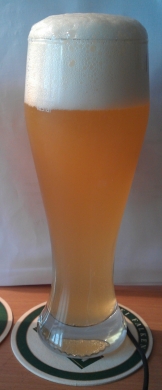
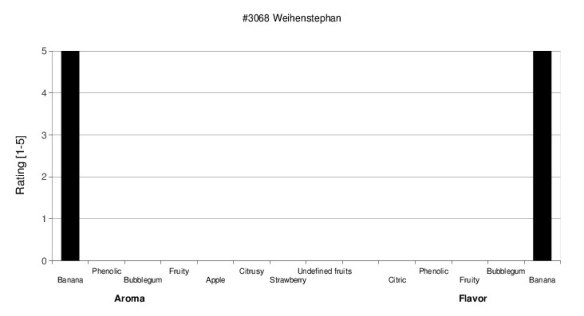

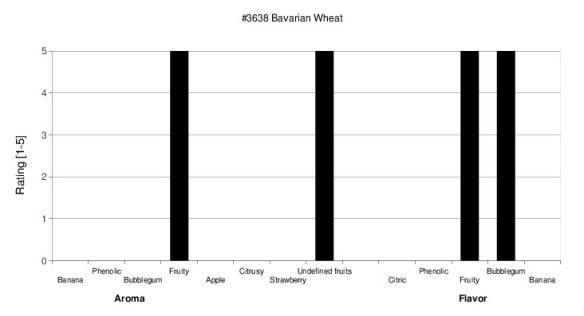


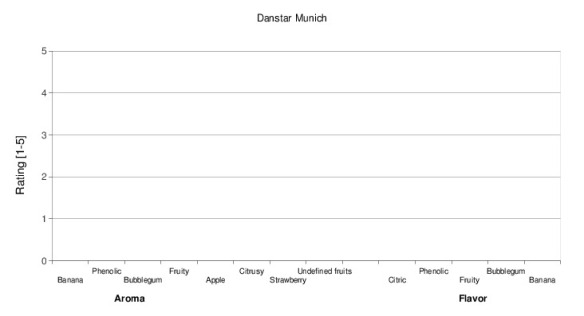

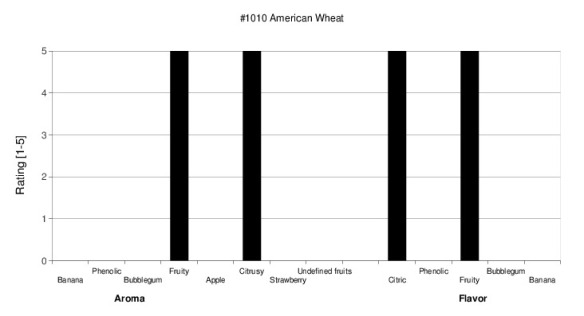

Fantastic post. Thanks. I don’t understand why yeast manufacturers don’t do exactly this and provide it. Fermentis is probably the absolute worst when it comes to product descriptions. They would probably sell triple the amount of yeast with a little work into marketing and educational materials. People buy Wyeast 3068 because we all know what it it produces a Wein-esque hefeweissbeir style flavor. So the marketing is just the name alone.
In particular, I liked seeing the atypical or less common brands presented. They have the least amount of info on the web.
Thanks Nathan for your comments. I can’t understand it either why some yeast suppliers do not supply something like a flavor profile for their yeasts. They could agree on some special characteristics (like I have done for wheat yeasts) and compare the individual strains. It makes it a lot easier to choose the right strain if you want a beer with a lot of banana character.
White Labs opened a tasting room this year where you can taste beers fermented with a particular White Labs strain to get an idea about the yeast itself. A rather nice idea in my opinion. On the other hand, Wyeast supplies a lot of information about their strains on their website as well. In general, both suppliers give you good information about their yeasts.
Cheers, Sam
Fantastic work on the comparison here…I went looking for a 3068 v wb-06 comparison and came across this, with so much more info than I had hoped to find. Thanks for taking the time.
I have brewed a number of wheat beers with wb-06 now, at various temperatures. My first brew with wb-06 was without temp control, so fermentation was between 20-22 degrees. I enjoyed the result, a tartness that was a little unexpected but most welcome. I then brewed a dunkelweizen with wb-06 at 19.5 (temp controlled). Again an almost agressive tartness, no banana esters to speak ok…but I still enjoyed it. It was then I read about higher temps bringing out more banana esters…so I just brewed another hefe with wb-06 at a temp controlled 23.5 degrees. I tasted it yesterday after 10 days in the bottle…good banana aroma, slight banana flavour, but still that slight tartness that I don’t get out of a bottle of Weihenstephan hefe.
So it’s time to move on to the liquid yeasts. Following your article above I think I’ll re-do my dunkel recipe changing only the yeast, for the 3068. Perhaps I’ll even split the batch and do half with 3068 and half with 3638. Question is, at what temperature? I might start at 22 as I prefer banana to clove.
I am disappointed that you weren’t able to get a reliable result from the Danstar Munich, as I have read widely varying reports of that yeast. A side by side test with the rest of your beers would have been a reliable reference point. Have you ever used it outside of this experiment? If so would you care to comment?
Thank you for commenting and for sharing your experiences with the wheat yeasts. Well, I haven’t used any dried yeasts since this experiment except for a batch a few days ago because I encountered some fermentation problems. However, I used WB-06 in this particular case. I therefore can’t tell anything more than published in this post about my experiences with wheat dry yeasts. Concerning the Danstar Munich in my experiment. We did the tasting side by side to get a relative idea how the different aroma profiles are. In the case of Danstar Munich we were not sure if there was something wrong with the beer itself and therefore did not make any conclusions about this strain. Just to be fair with the Danstar Munich product.
In your case to maximize the banana character. First, I would try to circumvent any ferulic acid rest during mashing. Just to minimize the precursors for any phenolic/clove character later on. Second, try to pitch less yeasts than usual. For example 5E6 cells mL-1 is a good starting point. Third, I would try to begin the fermentation at about 18-20°C and slowly rise the temperature to 22-24°C after one or two days over a period of 2 days (if possible). I start all my fermentations in the basement at 18-20°C and leave the fermenters down there for 2 days and then take them up to the first floor to leave it at 20-24°C for the rest of the primary fermentation. If this is still not enough, you could do a Maltaseverfahren. This procedure maximizes the glucose content in the wort and the esters responsible for the banana character increase a lot as well. Unfortunately, I haven’t found any link right now explaining this procedure in English. And I haven’t tried this method before. I hope some of my explanations are useful for you to get a more banana driven beer. Cheers, Sam
I have just made a beer with Danstar Munich and it was awful. This is the same recipe I’ve used before and scored very well in competitions with. It is a standard weissbier recipe. The yeast I normally use is White Labs 380, which I really like. With the Munich yeast, the beer had zero banana ester, very little phenolic / clove, and a most unpleasant tartness to it. This is more suited, albeit poorly still, as an American style wheat. It was not a yeast I will soon be returning too.
Thanks for sharing your experiences. Not a fan of Danstar Munich myself…
Just saw this. In 2015 I did a comparison of Lallemand Munich, Lallemand Munich Classic (new on the market as of early summer 2015), Mangrove Jack M20 and Mauri Brew Mauri Weisse. Fermentis didn’t sent a sample and was not included. I did split batches that fermented at 17°C or 20°C. I like the 3068, Munich Classic is the closest dry yeast to it. Mauri Weisse was 2nd. Mangrove Jack had low attenuation, Mauri midium, Lallemand higher. The Munich had orange flavors and some tartness, the least favorite. That is all I remember, I don’t have the data available where I am right now.
PS: I was nice to meet you at Amsterdam this summer.
Great. Thanks for sharing your experiences. Was also my pleasure to meet you in Amsterdam. Already looking forward to the next one in 2017. Not sure if I can attend though…
Tx for the research.
Glad to hear about your experience with 3942. I have a Witbier in the fermenter because my LHBS was out of 3944. I was planning on brewing a hefe for the summer. I might save myself some cash and just use the 3942.
I can see WY3942 work for a Wit and a Hefeweizen. Cheers & happy brewing
This an outstanding achievement in Bavarian wheat yeast analyses. I am a professional brewer with a passion for these beer styles and I have yet to come across such a detailed and descriptive study. Awesome job, my friend. Thank you!
Tim G.
Great post! I loved the detailed analysis, comparisons and flavor/aroma charts. Will definitely try the “underpitch for more banana character” method. Thanks!
Yunus
Cheers!